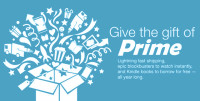In the good old days, an onpremise B2B software vendor would go through a long-drawn sales process but, when he bagged the deal at the end of it, he’d grab a pot of gold by way of millions of dollars in upfront license fees.
There’s no such luxury in the brave new world of cloud software. Typically sold on the basis of pay-per-use or monthly subscription, SaaS delivers very little upfront revenue.
As we highlighted on the SaaS Marketing section of our website, SaaS vendors survive on recurring revenues. This means they must drive retention and ensure that their customers keep renewing subscriptions, month after month. In other words, they must minimize customer churn.
A simplistic approach in this pursuit would be to insist on an upfront contract for 12 months. However, this will backfire for most vendors who’ve gone to market with exactly the opposite promise of pay-per-use or month-by-month subscription model.
What, then, can a typical SaaS vendor do against this backdrop?
We’ve observed a few best practices in the market:
 Amazon Prime: By providing free shipping for its subscribers, Amazon Prime removes one major friction in ecommerce, namely, extra freight cost. However, if you scratch beneath the surface, Amazon Prime achieves more: It nudges customers to buy as many things from Amazon as possible and get them delivered at zero shipping cost by saving people the trouble of searching for another e-tailer that provides free shipping.
Amazon Prime: By providing free shipping for its subscribers, Amazon Prime removes one major friction in ecommerce, namely, extra freight cost. However, if you scratch beneath the surface, Amazon Prime achieves more: It nudges customers to buy as many things from Amazon as possible and get them delivered at zero shipping cost by saving people the trouble of searching for another e-tailer that provides free shipping.
 LinkedIn InMail: Salespersons and marketers know that their cold emails to potential customers elicit poor response rates. LinkedIn offers them a powerful value proposition by promising a 30X higher likelihood of response for its proprietary InMail message. The professional network backs up its claim with an InMail credit if there’s no response in seven days. The catch is, customers can avail themselves of the free replacement InMail only if they stay subscribed to one of the social network’s premium plans when they claim it. There are people who renew their premium plans for years just so that they’re able to claim refund for unresponded InMails.
LinkedIn InMail: Salespersons and marketers know that their cold emails to potential customers elicit poor response rates. LinkedIn offers them a powerful value proposition by promising a 30X higher likelihood of response for its proprietary InMail message. The professional network backs up its claim with an InMail credit if there’s no response in seven days. The catch is, customers can avail themselves of the free replacement InMail only if they stay subscribed to one of the social network’s premium plans when they claim it. There are people who renew their premium plans for years just so that they’re able to claim refund for unresponded InMails.
 GoDaddy: If you decide not to renew a domain name booked via GoDaddy, you’ll face the brunt of the company’s high pressure carrot-and-stick tactics, communicated via a series of RAG-coded emails. At first, GoDaddy will entice you with a green-coded special renewal price (typically 20% discount from full price). If you don’t bite at this stage, the company will send you an amber colored email threatening an $80 fine. This fine is only applicable for customers who inadvertently let the domain expire and not someone like you who took a conscious decision to not renew the domain. But, to realize that, you need to take the trouble to comb through fineprint. Most people won’t and will end up coughing up the 10-odd dollar special price and renew the domain that they didn’t want.
GoDaddy: If you decide not to renew a domain name booked via GoDaddy, you’ll face the brunt of the company’s high pressure carrot-and-stick tactics, communicated via a series of RAG-coded emails. At first, GoDaddy will entice you with a green-coded special renewal price (typically 20% discount from full price). If you don’t bite at this stage, the company will send you an amber colored email threatening an $80 fine. This fine is only applicable for customers who inadvertently let the domain expire and not someone like you who took a conscious decision to not renew the domain. But, to realize that, you need to take the trouble to comb through fineprint. Most people won’t and will end up coughing up the 10-odd dollar special price and renew the domain that they didn’t want.
All of these tactics discourage you from canceling a subscription aka “churning out” of the service.
If you look around, you’ll find many more tactics like these used by SaaS companies to minimize customer churn. Each approach has its own merits and demerits. Some of them might even appear unethical to some of you.
It’s really down to each SaaS provider to work out a suitable strategy that accomplishes its business goal of minimizing churn while conforming with its moral compass.
